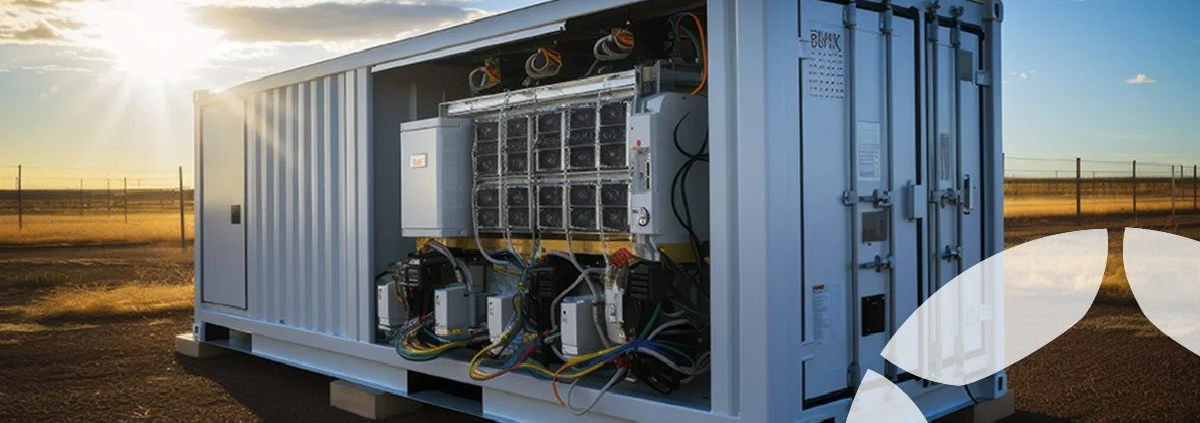How Industrial Battery Energy Storage Solutions Enable Peak Shaving, Backup Power, and Grid Services
- Introduction — Why Industrial Facilities Are Turning to Smart Energy Storage
Across manufacturing plants, logistics hubs, and commercial complexes, reliable and flexible power is becoming as critical as raw materials. Rising energy costs, unpredictable demand peaks, and growing grid instability have pushed industrial operators to look beyond traditional backup systems.
Industrial Battery Energy Storage Systems (BESS) are emerging as a key enabler—providing instant backup during outages, flattening peak loads, and even generating revenue through grid participation. Far from being just a “battery in a box,” today’s industrial BESS integrates advanced power electronics, communication networks, and AI-driven control for real-time optimization.
- Core Technologies and System Architectures
Industrial BESS platforms vary widely in design depending on capacity, deployment environment, and operational objectives. The most common architectures include:
- Centralized Systems: Ideal for large factories with a single main distribution point. They offer high efficiency but can pose scalability challenges.
- Modular or Containerized Systems: Easier to expand and relocate, suited for multi-site operations or temporary deployments.
- Outdoor Cabinet Air-Cooled Systems: Compact and ruggedized for harsh environments such as oil refineries, metal processing, or logistics yards.
For facilities requiring reliable operation in variable temperatures and limited indoor space, an outdoor-cabinet air-cooling energy storage system offers an efficient, space-saving alternative. Its integrated cooling design ensures consistent thermal management and long battery lifespan under demanding industrial conditions.
These architectures are supported by intelligent Battery Management Systems (BMS), inverter units for bidirectional power flow, and supervisory controllers that coordinate with building management or grid communication platforms.
- Key Industrial Applications and Business Value
Industrial BESS provides three major categories of value—operational savings, risk mitigation, and new revenue streams.
- Peak Shaving & Load Shifting
Many utilities charge based on peak demand rather than total energy consumed. By discharging during high-load hours, a BESS can lower the facility’s demand charge, saving thousands of dollars monthly. - Backup Power and Resilience
During blackouts or grid disturbances, BESS provides instant backup power, keeping critical loads—such as automated production lines, data servers, and HVAC systems—operational until diesel generators or the grid return. - Grid Services and Market Participation
With proper interconnection and controls, industrial BESS units can join frequency regulation, voltage support, and demand response programs, creating new revenue channels. In several U.S. states, these services are already supported by ISO market incentives. - Renewable Integration
In facilities with on-site solar or wind systems, BESS smooths generation variability, supports self-consumption, and ensures stable power quality even under fluctuating irradiance or wind speed.
- Design and Deployment Considerations
Industrial environments introduce unique design challenges that go far beyond standard commercial applications:
- Load Analysis and System Sizing: Energy managers must assess the difference between average and peak power consumption, as well as the duration and criticality of backup loads.
- Environmental Factors: Heat, dust, vibration, and electromagnetic interference (EMI) can shorten system life or trigger safety alarms. Proper enclosure design and cooling—air or liquid—is essential.
- Safety and Compliance: Systems should meet UL 9540, NFPA 855, and IEC 62619 standards. Integration with fire suppression and ventilation systems is mandatory in most jurisdictions.
- Grid Interconnection: Communication protocols (Modbus TCP, CAN, IEC 61850) ensure coordination between BESS, UPS, and building management systems.
- Maintenance Accessibility: Cabling, breaker access, and monitoring ports should be positioned for fast serviceability.
For a deeper technical exploration of architecture and installation standards, see:
👉 Understanding Industrial Energy Storage Systems: Technologies, Architectures, and Deployment Considerations.
- Operation, Monitoring, and Predictive Maintenance
Modern industrial BESS are intelligent systems capable of real-time self-diagnosis. Through sensors and cloud-based dashboards, operators can monitor:
- State of Charge (SOC) and State of Health (SOH)
- Temperature distribution across cells and racks
- Voltage and current imbalances
- Cycle count and degradation trends
AI-enhanced analytics can detect early-stage anomalies—such as abnormal impedance rise or uneven thermal gradients—before they escalate into system faults. Predictive maintenance algorithms also help schedule service windows to avoid production interruptions.
In many cases, integration with existing SCADA or ERP systems allows maintenance teams to correlate energy performance with production data, revealing optimization opportunities beyond the energy domain.
- Economic Modeling and ROI
The financial justification for industrial BESS extends beyond basic cost savings:
- Demand Charge Reduction: A typical medium-sized plant can save 10–30% on electricity bills through peak shaving alone.
- Energy Arbitrage: Purchasing power during off-peak hours and discharging during peak periods maximizes tariff differentials.
- Revenue from Grid Services: Participation in ancillary service markets can yield additional ROI within 3–5 years.
- Increased Power Reliability: Avoiding even a single unplanned shutdown can offset a large share of initial CAPEX.
A comprehensive ROI model should include both tangible (energy savings) and intangible (brand reliability, compliance readiness) benefits.
- Future Trends and Strategic Outlook
Industrial BESS is transitioning from a “support system” to a strategic asset within corporate energy portfolios. Key trends shaping the sector include:
- AI-Driven Dispatch Optimization — autonomous energy scheduling across multiple sites.
- Hybrid Energy Systems — combining batteries with supercapacitors or thermal storage.
- Liquid Cooling and Higher Energy Density Cells — enabling MW-scale systems in smaller footprints.
- Standardization and Modularization — faster installation, easier component replacement.
- ESG and Carbon Accounting Integration — aligning energy management with sustainability reporting.
- Conclusion — Building a Smarter, More Resilient Industrial Power Future
Industrial battery energy storage solutions are redefining how factories, warehouses, and infrastructure operators manage electricity. Beyond providing backup, they empower companies to actively control when and how energy is used—reducing costs, increasing uptime, and enabling participation in the modern energy economy.
For facilities exploring scalable and reliable deployment options, choosing the right architecture, cooling strategy, and control platform will be crucial.
To further explore best practices in system selection and quality benchmarks, read:
👉 High Quality Industrial Energy Storage Systems: What Sets Them Apart and How to Choose the Right One.


